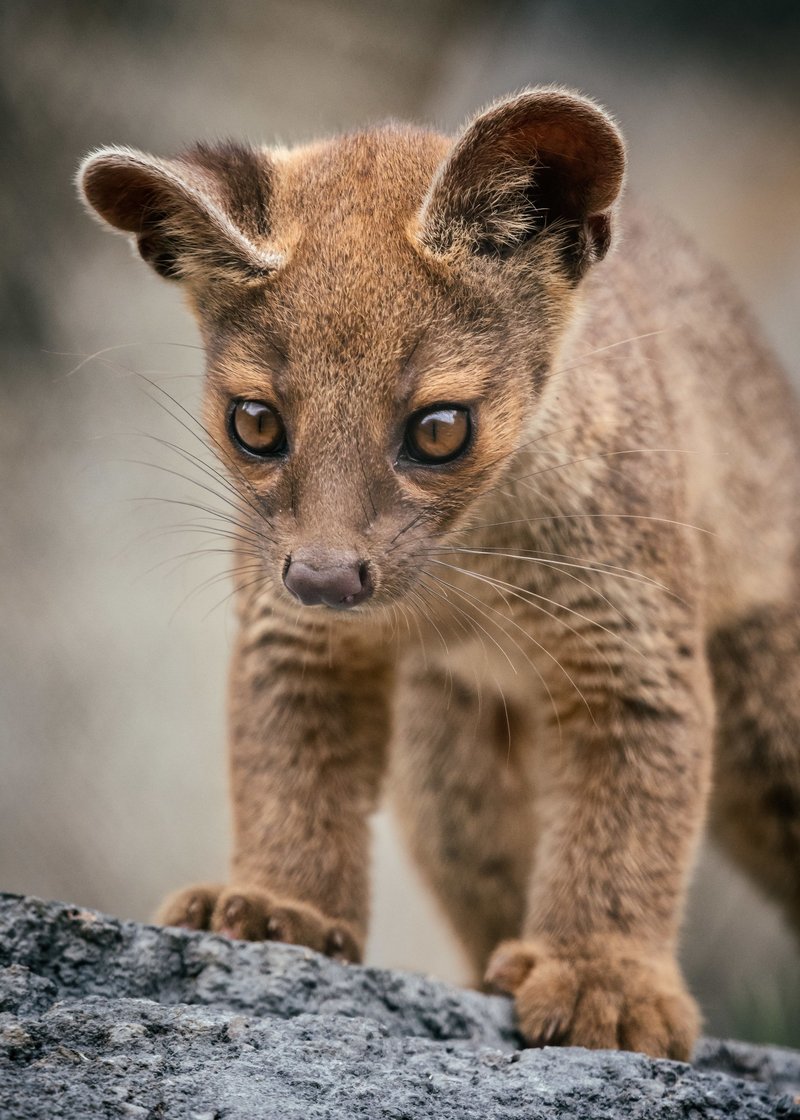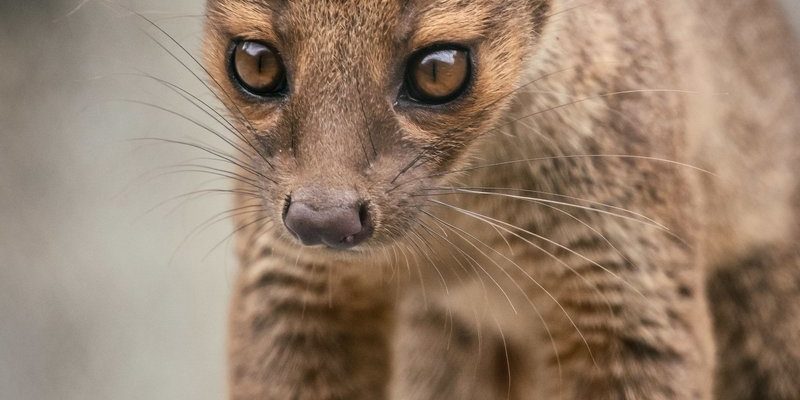
The fossa is often misunderstood; many people might mistake it for a small cat or a member of the weasel family. In reality, it’s unique to Madagascar and the largest carnivorous mammal on the island. This animal hunts various prey, primarily lemurs, but its influence stretches beyond just its hunting habits. It’s a crucial player in keeping the ecosystem healthy and functioning well. Let’s dig deeper into how the fossa contributes to its environment and why it matters for the future of Madagascar’s wildlife.
Understanding the Fossa: An Overview
The fossa (Cryptoprocta ferox) is a unique carnivore that embodies the essence of Madagascar’s wilderness. With a long, agile body, short legs, and a tail that can be as long as its body, this predator is built for climbing and hunting. It has retractable claws and sharp teeth, perfect for capturing small mammals and birds. The fossa can weigh up to 24 pounds, with a length ranging from 24 to 28 inches, plus a tail of about the same length, making it quite an impressive sight in its natural habitat.
One of the fossa’s remarkable features is its excellent climbing ability. It often hunts lemurs and other tree-dwelling animals, using its sharp senses to stalk its prey. Interestingly, fossas are also known for their agility and speed, allowing them to navigate Madagascar’s dense forests with ease. This skill not only aids them in hunting but also helps maintain the balance within the ecosystem.
You might be wondering why the fossa’s existence is vital for Madagascar. Its role reaches far beyond being a simple predator. As a top carnivore, it plays a pivotal role in keeping populations of other species in check, thereby contributing to the overall health of the ecosystem.
The Predator-Prey Relationship
Fossas primarily feed on lemurs, which are one of the most iconic animals of Madagascar. This predator-prey relationship is crucial. By keeping lemur populations in check, fossas help prevent overgrazing of vegetation, which could lead to habitat degradation. Imagine a scenario where lemurs multiply unchecked; they would consume immense amounts of foliage, harming the delicate balance of the forest.
But it’s not just lemurs that fall victim to the fossa’s keen hunting skills. They also hunt other small mammals, reptiles, and birds. This diverse diet allows them to adapt to seasonal changes, ensuring they have a stable food source year-round. The fossa’s role as a predator helps regulate not just one species but many, creating a more balanced ecosystem.
Here’s the thing: if fossas were to vanish, the repercussions would be significant. Without these apex predators, the populations of their prey would surge, leading to increased competition for resources and ultimately a decline in biodiversity. So, the fossa’s role is not just about eating; it’s about maintaining a healthy, functioning ecosystem.
The Fossa’s Impact on Biodiversity
Biodiversity refers to the variety of life in a particular habitat or ecosystem. The fossa plays a central role in supporting Madagascar’s incredible biodiversity. As an apex predator, it regulates various prey species, ensuring their populations don’t explode. This regulation allows for a diverse array of plant and animal life to thrive.
When the fossa hunts, it not only impacts the population dynamics of lemurs and other species but also influences the vegetation in their environment. For example, when herbivores are kept in check, the forest grows healthier, leading to improved habitat for countless other species. This relationship creates a ripple effect.
You might not realize it, but every time a fossa captures prey, it’s not just a meal but an essential process that promotes a rich tapestry of life. The fossa’s presence signifies a healthy ecosystem, where various species coexist and support each other’s survival.
Habitat and Range
Fossas are endemic to Madagascar, meaning they exist nowhere else in the world. They thrive in various habitats across the island, including rainforests, dry deciduous forests, and even spiny forests. This adaptability is one of their strengths, allowing them to occupy different ecological niches.
However, Madagascar’s unique habitats are under threat from deforestation and habitat loss. As human activities encroach on their territory, fossas face increasing challenges in finding food and suitable nesting sites. This is concerning because the fossa’s habitat needs to remain intact to support not only their population but also the myriad of other species that depend on the same environment.
You might be surprised to know that the decline of the fossa could signal broader ecological issues. When apex predators like the fossa struggle, it often indicates that the ecosystem is out of balance—a warning sign for biodiversity conservation efforts across the island.
Conservation Challenges and Efforts
The fossa is currently classified as vulnerable, primarily due to habitat loss and hunting. As Madagascar’s forests are cleared for agriculture and urban development, fossas find it increasingly difficult to survive. Here’s the thing: if this trend continues, we might lose not just the fossa, but also the delicate balance of its ecosystem.
Conservation efforts are crucial for protecting the fossa and its habitat. Various organizations work towards creating protected areas, encouraging sustainable land-use practices, and promoting community awareness about the importance of this unique predator. Local communities are encouraged to participate in conservation initiatives, emphasizing that a healthy ecosystem benefits everyone—especially those who rely on the forest for their livelihoods.
By supporting eco-friendly practices and spreading awareness, we can contribute to the survival of the fossa and the rich biodiversity of Madagascar. It’s a complex issue, but each small step counts.
The Role of Fossas in Local Culture
In Madagascar, the fossa is more than just an animal; it holds cultural significance for local communities. Traditionally, the fossa has been viewed with a mix of respect and fear, often appearing in folklore and tales. In some cultures, it’s seen as a symbol of cunning and agility, embodying traits that are admired by locals.
However, misconceptions about the fossa can lead to conflict. For example, when livestock are attacked, people might blame the fossa, leading to unnecessary hunting of this important species. Education plays a key role in changing these perceptions. By fostering a better understanding of the fossa’s ecological importance, we can help communities coexist more peacefully with this fascinating predator.
So, let’s remember that every creature, including the fossa, has its place and purpose in the grand scheme of life. Learning about and respecting these roles can help foster a more harmonious relationship between humans and wildlife.
The fossa is an extraordinary creature with a vital role in maintaining the balance of Madagascar’s ecosystems. As a top predator, it regulates populations of various species, supporting the rich biodiversity that characterizes the island. The challenges it faces, from habitat loss to cultural misunderstandings, underline the need for continued conservation efforts.
By understanding the fossa and its significance, we pave the way for a healthier environment for all species, including ourselves. Every small action counts toward preserving this unique creature and the ecosystems it supports. So, let’s cherish and protect the fossa, ensuring that it continues to thrive in the wild, an emblem of Madagascar’s enchanting wildlife.

